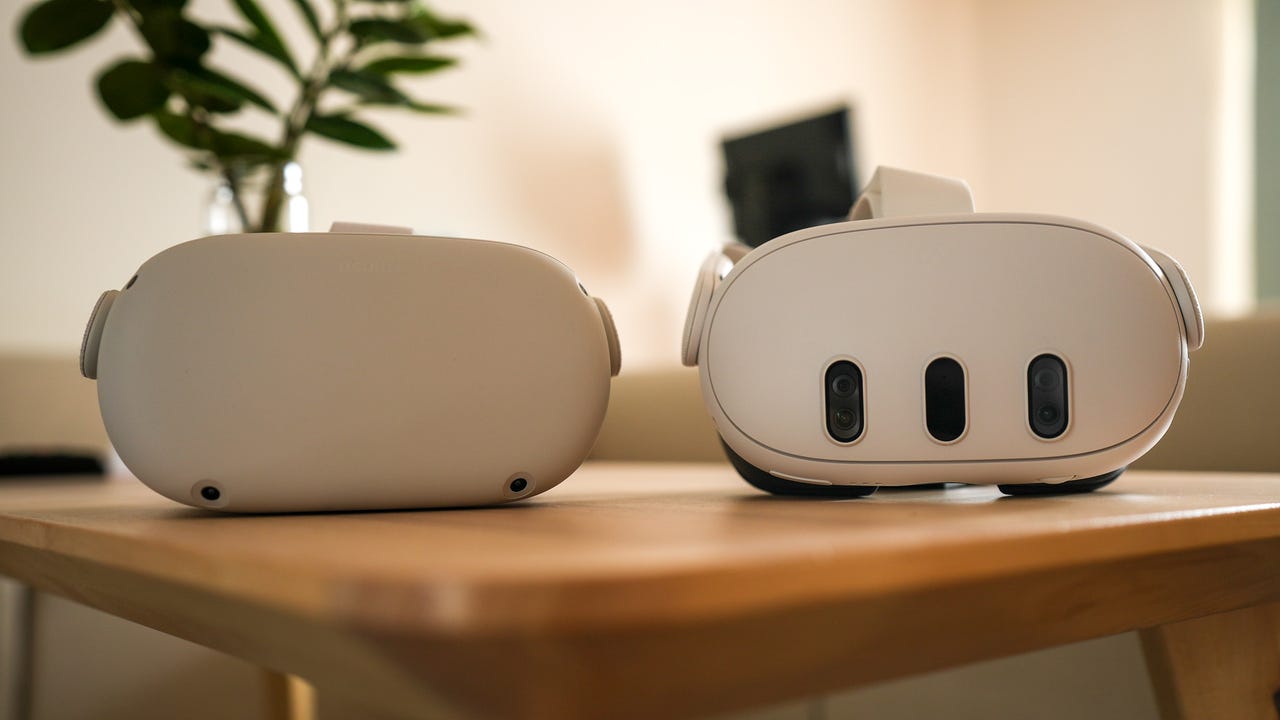'ZDNET Recommends': What exactly does it mean?
ZDNET's recommendations are based on many hours of testing, research, and comparison shopping. We gather data from the best available sources, including vendor and retailer listings as well as other relevant and independent reviews sites. And we pore over customer reviews to find out what matters to real people who already own and use the products and services we’re assessing.
When you click through from our site to a retailer and buy a product or service, we may earn affiliate commissions. This helps support our work, but does not affect what we cover or how, and it does not affect the price you pay. Neither ZDNET nor the author are compensated for these independent reviews. Indeed, we follow strict guidelines that ensure our editorial content is never influenced by advertisers.
ZDNET's editorial team writes on behalf of you, our reader. Our goal is to deliver the most accurate information and the most knowledgeable advice possible in order to help you make smarter buying decisions on tech gear and a wide array of products and services. Our editors thoroughly review and fact-check every article to ensure that our content meets the highest standards. If we have made an error or published misleading information, we will correct or clarify the article. If you see inaccuracies in our content, please report the mistake via this form.
Meta Quest 2 vs Quest 3: Which VR headset should you buy?

It's been almost half a year since the Meta Quest 3 launched, and time has proven that it's a worthy successor to the popular Quest 2 -- bringing improved experiences across the board. Virtual reality is more accessible than ever, and that's almost entirely because of the technological advances made by various versions of the Quest.
Also: Meta Quest 3 review: The VR headset most people should buy in 2024
While the Quest 3 remains ZDNET's top pick for "best" VR headset, that doesn't necessarily mean it's right for everyone. In fact, there's a large number of people who may actually find that the Quest 2 better fits their needs, especially with the headset's recent price drop to $200.
So how do you decide which one is right? Is the Meta Quest 3 worth the price? How is the Quest 2 better? Let's dive in to find out which Quest headset fits your needs.
Specifications
Meta Quest 2 | Meta Quest 3 | |
Price | Starting at $199 | Starting at $499 |
Display | LCD with 1832 x 1920 pixels per eye | LCD with 2064 x 2208 pixels per eye |
| Refresh rate | 72Hz to 90Hz | 90Hz (up to 120Hz in some use cases) |
| Chipset | Qualcomm Snapdragon XR2 | Qualcomm Snapdragon XR2 Gen 2 |
| Battery life | 2-3 hours | 2-3 hours |
RAM | 6GB | 8GB |
| Storage | 128GB and 256GB versions | 128GB and 512GB versions |
| Passthrough | Black and white | Full color |
You should buy the Meta Quest 3 if...
1. You want the best performance and the best display
The Quest 2 has a perfectly fine 1832 x 1920 display, but the Quest 3 sports an impressive 2064 x 2208. And that's just the beginning of the technical upgrades. Not only will games look much better, but they will run more smoothly on the newest Quest thanks to a 90Hz refresh rate (120Hz in some cases) compared to the Quest 2's 72Hz to 90Hz refresh rate.
Also: 3 likely reasons why Quest 3 is more popular with users than other Meta VR headsets
In addition, the latest Snapdragon XR2 Gen 2 chip provides two times faster graphical performance. In short, if you plan on playing A-list games and you want them to run at top performance, you'll need the top-of-the-line hardware. The Quest 3 will also be backward compatible with all Quest 2 games, meaning it can handle your old library just fine.
2. You've tried a VR headset before and found it uncomfortable
While bigger often means better in the tech world, that doesn't apply here. The Quest 3 is noticeably smaller and slimmer than the Quest 2 -- 40% by most reports. This is largely due to what's known as pancake optics, a technology that layers optical film to fit higher-resolution lenses in smaller spaces.
While the weight of the two devices is very similar, bringing that weight closer to your face -- as the Quest 3 does -- will make the headset seem much lighter, and you won't have to work as hard to keep your face from tipping forward. The controllers on the newest Quest are also smaller than before, losing the large ring. This makes them lighter and more comfortable to hold.
3. You want more storage
Aside from the technical aspects, there's a relatively practical reason for picking the Quest 3 -- storage space. If you think you'll be downloading a lot of games (say, 70 or more), the newest Meta headset offers a 512GB version, which is enough to hold just about anything you'd ever need without having to delete games to make room.
Also: Meta opens its Quest OS to third-party headsets, including from Asus and Lenovo
While Medal of Honor comes in at a whopping 41 gigabytes, most games are in the 2GB to 8GB range or less even, meaning you'd be able to store nearly 100 games at the moment. Of course, with the Quest 3 being brand new, it's never a bad idea to plan for the future. Games are getting larger, and Medal of Honor's size might not be so much of an exception a year from now. If you want to make sure you're ready for those larger games, spring for more storage.
You should buy the Meta Quest 2 if...
1. You're looking for affordability
The single biggest reason to choose the Quest 2 over the Quest 3 is the most obvious: price. While the newest version of the Quest carries a price tag of $499, the previous version comes in at $199, a savings of $300. And since the Quest 2 is still a perfectly capable virtual reality headset, it will do the job just fine if you're looking for an entry-level option. Of course, even the Quest 3 is still far cheaper than the Vision Pro from Apple, which is priced at $3,500.
2. You're not concerned about mixed reality, only virtual
If you just want to play basic games, work out, and watch movies in VR, then the Quest 2 should be your pick. One of the biggest upgrades from the Quest 2 to the Quest 3 is in the mixed-reality department -- that is, where digital elements are overlaid on the physical world.
Also: Meta permanently slashes the Quest 2's price again, dropping it to an all-time low
The Quest 3 has three oval cutouts on the front of the headset and a new depth sensor that make for a pretty impressive full-color passthrough, or real-life/VR mix. But, if that doesn't appeal to you, save the money on the more expensive version.
